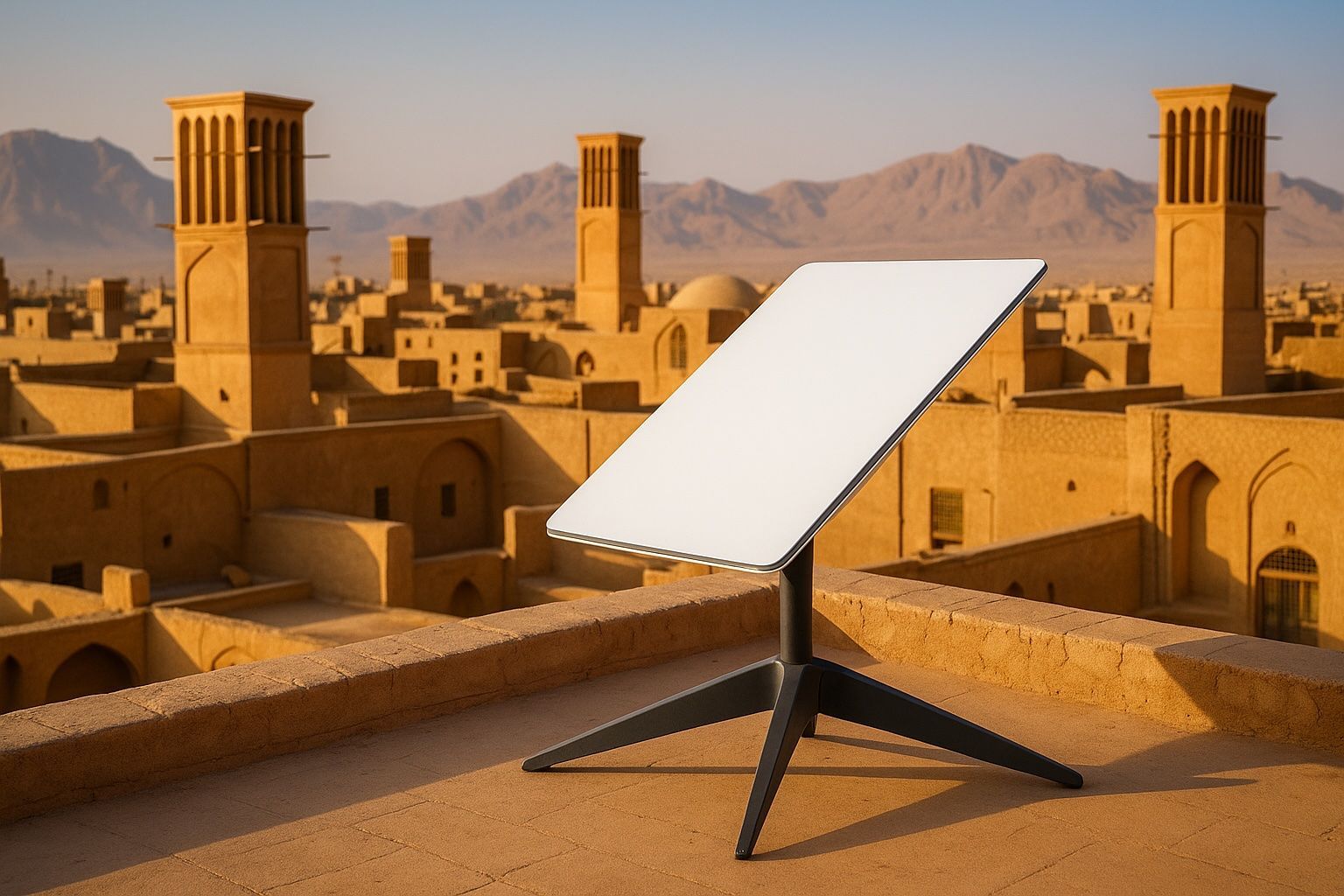Digitālās savienojamības pārskats Malaizijā
Malaizija bauda augstu interneta penetrāciju un mūsdienīgu digitālo infrastruktūru. 2022. gadā aptuveni 97% indivīdu Malaizijā bija interneta lietotāji [1], un gandrīz 96,9% apdzīvoto teritoriju bija pārklāti ar 4G mobilo pakalpojumu [2]. Pilsētās un mazpilsētās internets ir gandrīz visuresošs, ko nodrošina plaša mobilo platjoslas pakalpojumu pieņemšana un paplašinošs optisko šķiedru tīkls. Valdības iniciatīva Jalinan Digital Negara (JENDELA) (2020–2025) ir bijusi galvenais uzlabojumu virzītājspēks – 1. fāze (līdz 2022. gadam) pārsniedza mērķus, paplašinot 4G pārklājumu līdz ~97% iedzīvotāju pārklājuma un optiskās šķiedras platjoslu līdz 7,74 miljoniem objektu [3]. JENDELA 2. fāzē Malaizija turpina ieguldījumus digitālajā infrastruktūrā, lai sasniegtu atlikušās apkalpotās vietas, mērķējot uz 100% interneta pārklājumu apdzīvotās vietās līdz 2025. gada beigām [4] [5]. Kopumā Malaizijas savienojamības ekosistēma ir stabila un pastāvīgi uzlabojas, padarot to par vienu no Dienvidaustrumu Āzijas visvairāk digitāli savienotajām valstīm.
Fiksēta platjosla (optiskās šķiedras un mājas internets)
Optisko šķiedru platjosla ir plaši pieejama pilsētu un piepilsētu Malaizijā, nodrošinot ātru un uzticamu internetu mājās un uzņēmumos. Telekomunikāciju kompānija Telekom Malaysia (TM) ar savu Unifi pakalpojumu ir visplašāk optisko šķiedru pārklājums valstī [6]. Daudzas konkurējošās šķiedru ISPs pastāv daudzviet – piemēram, TIME dotCom piedāvā ātrgaitas šķiedru lielākajās pilsētās (bieži vien daudzstāvu ēkās un biroju celtnēs) ar ļoti konkurētspējīgiem tarifiem [7]. Maxis, CelcomDigi un citi arī nodrošina mājas šķiedru pakalpojumus, bieži vien izmantojot TM infrastruktūru vai ar saviem reģionālajiem tīkliem [8] [9]. Pilsētās kā Selangors, Penanga, Džohors un Kualalumpura šķiedru savienojamība ir ierasta prakse, kamēr dažās lauku un attālās vietās joprojām trūkst šķiedru pārklājuma (turpinās centieni paplašināt šķiedru tīkla nospiedumu ar JENDELA palīdzību).
Tipiskie šķiedru ātrumi un plāni: Malaizijas šķiedru platjosla ir augstas kvalitātes, ar plāniem sākot no pamata 30–50 Mbps līdz gigabitu ātrumiem. TM’s Unifi, piemēram, piedāvā plānus no 30 Mbps (RM89/mēnesī) līdz 800 Mbps (RM299/mēnesī) [10], un pat īpašus 1 Gbps un 2 Gbps paketes smagiem lietotājiem [11]. Konkurējoši ISPs kā TIME piedāvā 100 Mbps par ~RM99 un īstus 1–2 Gbps plānus (TIME bija pirmais, kurš ieviesa pilnu 2 Gbps šķiedru plānu Malaizijā) [12] [13]. Tabulā zemāk ir parādīti mājas platjoslas pakalpojumu piemēri:
| Pakalpojumu sniedzējs & Plāns | Mēneša maksa (MYR) | Lejupielādes ātrums | Piezīmes |
|---|---|---|---|
| TM Unifi Fiber 100 Mbps | RM129 [14] | 100 Mbps (neierobežots) | ~50 Mbps augšupielāde; plašākais pārklājums. |
| TM Unifi Fiber 300 Mbps | RM159 [15] | 300 Mbps (neierobežots) | Vidēja līmeņa plāns. |
| TM Unifi Fiber 800 Mbps | RM299 [16] | 800 Mbps (neierobežots) | Ātrgaitas mājas lietošanai. |
| TIME Fiber 500 Mbps | RM139 [17] | 500 Mbps (simetrisks) | Ierobežots pilsētu teritorijās. |
| TIME Fiber 1 Gbps | RM199 [18] | 1,000 Mbps (simetrisks) | Ļoti ātrs, pilsētas teritorijās. |
Tabula: Mājas šķiedras platjoslas plānu piemēri Malaizijā (cenas uz 2023. gadu).
Kvalitāte un uzticamība: Šķiedras platjosla Malaizijā ir parasti uzticama un nodrošina zemu latentumu, kas ir piemērota HD straumēšanai, videokonferencēm un tiešsaistes spēlēm. Malaizijas vidējais fiksētā platjoslas lejupielādes ātrums ir ap 100–130 Mbps [19] [20], padarot to par vienu no labākajiem reģionā attiecībā uz fiksētās līnijas ātrumu. Pārtraukumu laiks parasti ir minimāls; tomēr, tāpat kā jebkurā valstī, neregulāri pakalpojumu traucējumi var notikt (piemēram, ja zemūdens kabeļi saskaras ar problēmām, starptautiskā satiksme var palēnināties). Vietās, kur nav pieejama šķiedra, DSL līnijas lielākoties ir aizstātas ar bezvadu platjoslas risinājumiem. Daudzi Malaizijas iedzīvotāji daļēji lauku apvidos izmanto fiksētu 4G/5G bezvadu platjoslu (piedāvā Unifi Air, CelcomDigi u.c.) kā alternatīvu līdz šķiedra sasniedz viņus. Kopumā iedzīvotājiem šķiedras savienojums (ja pieejams) ir vēlamā izvēle pastāvīgi ātram internetam.
Mobilā tīkla dati (4G un 5G)
References
1. freedomhouse.org, 2. freedomhouse.org, 3. soyacincau.com, 4. soyacincau.com, 5. www.malaymail.com, 6. soyacincau.com, 7. soyacincau.com, 8. soyacincau.com, 9. soyacincau.com, 10. soyacincau.com, 11. soyacincau.com, 12. soyacincau.com, 13. soyacincau.com, 14. soyacincau.com, 15. soyacincau.com, 16. soyacincau.com, 17. soyacincau.com, 18. soyacincau.com, 19. en.wikipedia.org, 20. en.wikipedia.org




